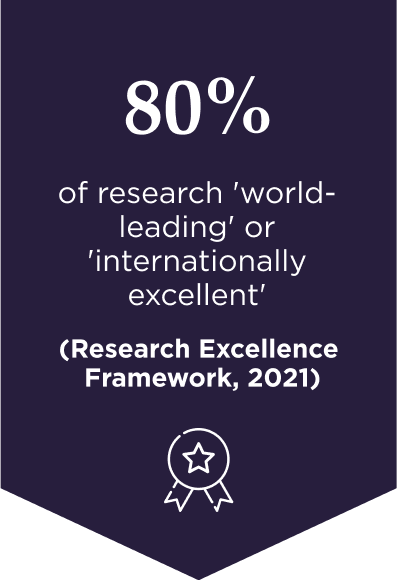The role of leadership and management in the modern workplace
Posted on: September 2, 2021
At first glance, leadership and management may appear to be synonymous with one another. Surely, a manager tasked with supervising people naturally also leads? Isn’t leading and managing people just common sense? Aren’t all successful leaders effective managers, and vice versa? Unfortunately, this isn’t always the case.
In order to maximise the output of an individual, team or business – and ultimately work towards a shared organisational vision – it’s crucial to utilise the distinct skills from both leadership and management.
What is the difference between leading and managing?
Leadership and management should go hand in hand, although both play markedly different roles in achieving the aims of a workplace.
Kotter (1990) defined management activities as ‘producing order and consistency’, focusing on planning and budgeting, organising and staffing, and controlling and problem solving, and defined leadership activities as ‘producing change and movement’ by establishing direction, aligning people, and motivating and inspiring.
Put simply, the key difference between the two is that leaders have people who follow them and managers have people who work for them. Although the major activities of management and leadership are played out differently, both are essential for an organisation to prosper.
Management skills underpin the effective day-to-day functioning of a team. They focus on administering tasks and achieving targets and goals. As a result, management encompasses the deployment and performance of human resources, financial resources, technological resources and natural resources. Leadership skills, on the other hand, are focused on the power and ability to lead other people – a leader’s focus is on motivating a group of people to achieve a common goal, rather than monitoring all of the smaller tasks that contribute to it.
As LinkedIn notes, leadership is a skill for any role – not just managers. Whether a person is in a management position or not, they can develop the necessary skills to inspire others. There are assigned leaders who occupy a position in the organisation which bestows power and authority, and emergent leaders who are perceived by others as the most influential member of a group regardless of their title.
Undoubtedly, we can all pinpoint examples of people we perceive to be great leaders, but that does not necessarily mean they manage a team. It’s certainly possible to be a good manager as well as a good leader, but it requires an understanding of the key skills and know-how, and how the tools and different priorities work in practice.
Why is leading important in management?
The modern workplace is dynamic and challenging. For any company to be truly successful, it requires managers who can plan, organise and coordinate its staff, and leaders who can motivate and inspire them to achieve the best possible outcomes.
Increasingly, organisations are seeking effective, agile and multi-skilled managers who are able to strategise, innovate, inspire and lead people to produce results.
Management is concerned with control, routine, diagnosing problems and organisational stability, and leadership is the opposite, concerned with direction setting, novelty, change and movement. However, the tasks of managers involve leadership issues such as task responsibility in fire fighting and achieving targets, and relationship responsibility in communicating with and supporting the team.
When the right balance between the two is achieved, businesses are likely to notice positive impacts on their team members: increased job satisfaction, a focus on professional development for intrinsic reasons, a greater sense of well-being , and commitment and loyalty to the company.
Team members who are more fulfilled, with renewed purpose and productivity, is not only good news for relevant stakeholders – it can spell great things for a company’s bottom line.
What are some of the tools an effective leader should develop?
For a team leader, identifying when and how to choose between the leadership vs. management tools at their disposal is a key skill. Just as there are different management styles, there are different leadership styles. Although there is a blueprint of useful tools a leader can draw on, how they use them in practice may look very different.
An effective team leader should be comfortable:
- motivating
- delegating
- handling conflict
- setting expectations
- building team resilience
- improving communication
- decision making
- innovating – creatively, critically and strategically
- coaching
- mentoring
To get the best out of a business and its staff, leaders should be self-aware and prioritise personal development. They should be strategic thinkers who encourage innovation and action, advocates of cross-cultural communication, and ethically and civilly minded.
To this end, an attribute which underpins many other leadership skills is emotional intelligence (also known as emotional quotient or EQ). It’s defined as the ability to recognise, understand and manage one’s own emotions and those of others. Emotional intelligence is separated into four categories: self-awareness, self-management, social awareness, and relationship management. A leader who can harness the emotions that act as a barrier to trust, collaboration and engagement across an organisation, is one who is more likely to see results.
Once a leader is able to effectively engage with others, they are well placed to use their other skills and tools to support others and meet outcomes.
Though some early leadership theories stated that individuals are born leaders and would assume power regardless of the social, organisational, or historical context (the Great Man Theory, by Thomas Carlyle in the 1850s), other theories suggest leadership behaviours can be learned, and that leadership is a set of properties possessed in varying degrees by different people (Jago, 1982).
Leading a team to high performance
Effective leadership can mean the difference between a low performing team and a high performing one. According to the findings of Google’s Project Aristotle, there are five key features of high performing teams:
- Psychological safety – an environment that feels judgement-free, where all team members can share their thoughts without fear
- Dependability – all team members can be relied upon to complete quality work on time
- Structure and clarity – there is clear understanding of the job expectations, the process for fulfilling these expectations, and the importance and impact of one’s performance for team effectiveness
- Meaning – the team derives a sense of purpose, either from the work itself or its contribution to team or company effectiveness
- Impact – subjective judgement that one’s work is making a difference
If a leader and manager can nurture an environment in which a team can thrive, using their array of leadership development tools, then that team has the foundation to maximise their value.
To that end, a leader who believes a team has the potential to improve possesses another incredibly valuable skill: a growth mindset. Coined by American psychologist, Carol Dweck, a growth mindset is the belief that one’s basic qualities can be cultivated through effort. The opposite of this is a fixed mindset, where it’s assumed that an individual’s qualities are fixed traits and cannot change.
A leader with a growth mindset tends to focus on the process rather than the outcome, and will see opportunities for their team – even in adversity.
When is leadership most important?
One of the most critical tasks for a leader is guiding their team through periods of change, instability and adversity. This has been particularly evident over the past year, as businesses have pivoted to adapt the way they operate in response to the current climate.
Changes to working environments, shifts in company direction and priorities, and revised team arrangements or work streams are all common examples of transition that leaders may need to navigate. In order to be successful, leaders must address and support the transition that people experience during these times; capitalising on organisational resilience and opportunities for innovation are key, as the Bridges Transition Model illustrates.
Many leaders may unconsciously support their teams through changeable times. For others, having the skills, strategies and awareness to make any transition as stable as possible is a leadership fundamental.
Develop your own leadership and management skills
Are you ready to create meaningful change for your business? Learn how to set yourself apart in a leadership or management role with the prestigious online MBA at Keele University. Join us, and gain the sought-after knowledge, skills and behaviours to successfully lead in an ethical, sustainable and transformative way.
On the Keele MBA, you will develop a broad understanding of popular and emergent leadership theories and will explore a range of leadership thinking. You will explore and debate contemporary concepts of leadership and will engage in some leadership development activities, emerging as a well-rounded, professional leader.



